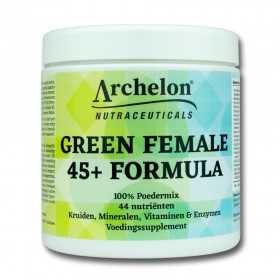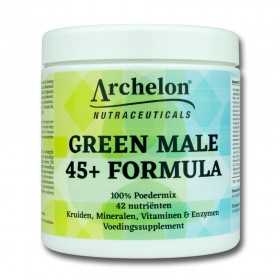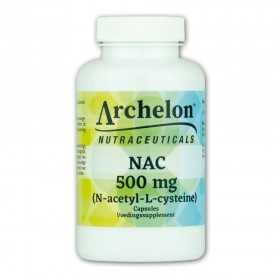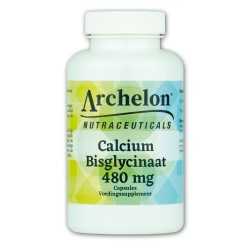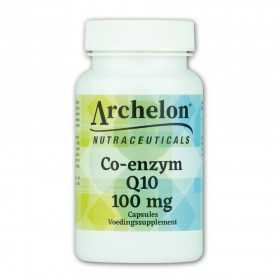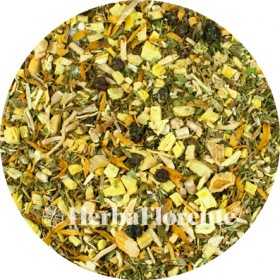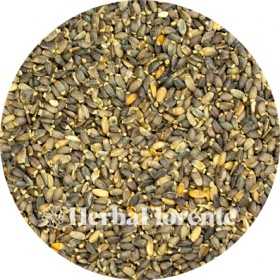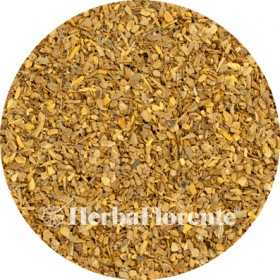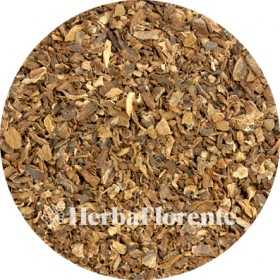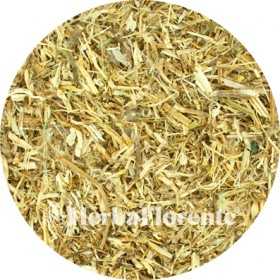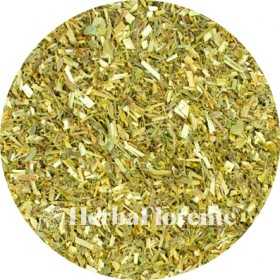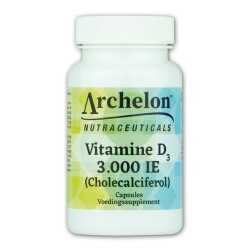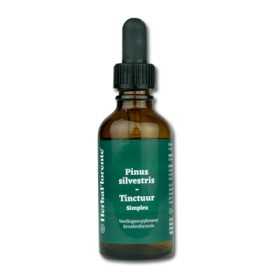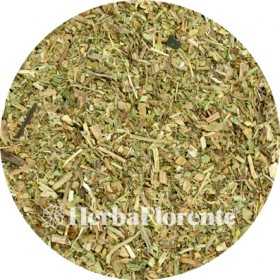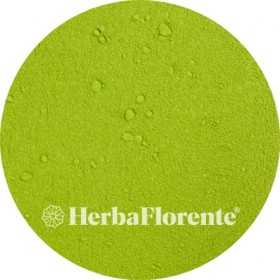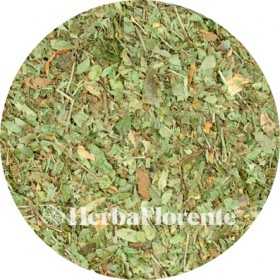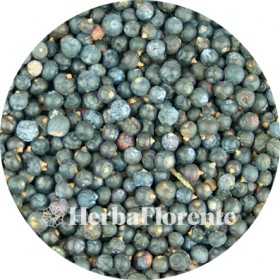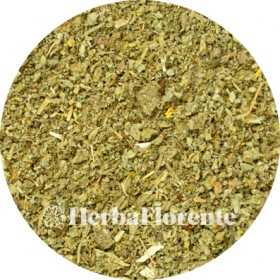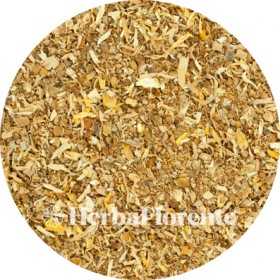Best sellers
There are 366 products.
Co-enzyme Q10 - 100 mg
Coenzyme Q10 is an indispensable substance for the body, essential for the conversion of food energy into bioenergy. This fat-soluble substance is found in the mitochondria (the energy factories) of every cell in the human body. Coenzyme Q10 can be found in foods such as meat (e.g. turkey), fish, grains and nuts. However, the amount of Q10 in our diet has decreased, making it often no longer sufficient.
Q10 is widely distributed in our body, which is why it is also called ubiquinone (derived from the Latin word for 'present everywhere'). Ubiquinone is the biologically active and endogenous form of Q10 and plays a crucial role in the energy production of every cell. CoQ10, the most active form of ubiquinone, is efficiently absorbed by the body.
Q10 is widely distributed in our body, which is why it is also called ubiquinone (derived from the Latin word for 'present everywhere'). Ubiquinone is the biologically active and endogenous form of Q10 and plays a crucial role in the energy production of every cell. CoQ10, the most active form of ubiquinone, is efficiently absorbed by the body.
€42.95
Magnesium Citrate - 500 mg
Magnesium is available in various organic forms such as magnesium citrate and the more absorbable organic form magnesium malate. Magnesium is also an important mineral for the body, as it is involved in many processes. Magnesium is essential for more than 300 enzymatic processes in the body, including protein synthesis. But also the electrolyte balance, the nervous system, energy management, normal cell division, concentration, memory and mood. Magnesium is also good for the muscles, bones and teeth.
€17.95
Vitamin C (Sodium Ascorbic Acid) - 625 mg
The pure form of vitamin C is ascorbic acid. The buffered forms of ascorbic acid are generally better tolerated by humans than the pure form. Ascorbic acid is acidic, the fused forms give virtually no gastrointestinal problems. Vitamin C is an essential vitamin for the body. It is involved in many processes in the body, including immune system, blood vessels, bones, cartilage, gums, teeth, skin, energy metabolism, nervous system and fatigue.
€17.95
ILHWA GINST15 Korean Ginseng Tea
In China, ginseng has been used as the favorite ingredient in tea for more than 5.000 years, due to its healing properties. Our tea is made of panax ginseng. Tasty and healthy, with a light spicy touch of the ginseng. A delicious and refreshing tea that contributes to your health. This tea contains calcium, iron, magnesium, copper and zinc.
Granular tea with increased absorption from GINST15 hydrolyzed ginseng extract, while keeping the original fragrance and taste of ginseng.
With GINST15, the ginsenosides are 15x better absorbed into the blood and absorption is 4x faster than with regular ginseng! For example, if you take the standard ginseng, it will take longer than 12 hours for your body to fully absorb it, with the GINST15 extract this takes a maximum of 3 to 4 hours!
Granular tea with increased absorption from GINST15 hydrolyzed ginseng extract, while keeping the original fragrance and taste of ginseng.
With GINST15, the ginsenosides are 15x better absorbed into the blood and absorption is 4x faster than with regular ginseng! For example, if you take the standard ginseng, it will take longer than 12 hours for your body to fully absorb it, with the GINST15 extract this takes a maximum of 3 to 4 hours!
€33.50
From: €33.50
Energy Herbal Tea
Herbal tea composed of various herbs
Great for an energy boost
Great for an energy boost
€5.95
Hawthorn Tincture - Crataegus oxyacantha Tincture
Single herbal tincture made with dried leaves & flowers of Crataegus (Hawthorn).
The hawthorn (Crataegus) is a natural source of beneficial substances. The flowers, leaves and to a lesser extent the berries of the hawthorn contain a rich variety of components, including flavonoids, procyanidins, vitamin C, tannins, glycosides and antioxidants. These substances have beneficial effects on the heart and contribute to a healthy lifestyle. Hawthorn is known for its calming properties and supports natural, deep sleep.
The hawthorn (Crataegus) is a natural source of beneficial substances. The flowers, leaves and to a lesser extent the berries of the hawthorn contain a rich variety of components, including flavonoids, procyanidins, vitamin C, tannins, glycosides and antioxidants. These substances have beneficial effects on the heart and contribute to a healthy lifestyle. Hawthorn is known for its calming properties and supports natural, deep sleep.
€9.95
Elder - Sambuci nigri
The elder (Sambucus nigra L.) is a versatile plant that grows both as a shrub and as a tree in many places in the Netherlands. Although the berries are mainly known for their health-promoting properties, the blossoms also contain valuable substances that can support the immune system and the respiratory tract.
The berries, which ripen towards the end of summer, are rich in natural vitamin C and are considered a powerful antioxidant. They are often used to support the immune system and respiratory system. In addition to flavonoids, the berries also contain anthocyanins, natural sugars and tannins, just like the blossoms.
The berries, which ripen towards the end of summer, are rich in natural vitamin C and are considered a powerful antioxidant. They are often used to support the immune system and respiratory system. In addition to flavonoids, the berries also contain anthocyanins, natural sugars and tannins, just like the blossoms.
€3.00
From: €3.00
Milk Thistle (Seed) - Sylibum marianum, Cardui Mariae - Whole
Milk thistle (Silybum marianum), also known as milk thistle or milk thistle, is a spiny plant native to the Mediterranean region, but which also grows in our area. It belongs to the composite family. Milk thistle has been used for centuries as a natural remedy to support liver and bile function. It can be used as part of a cleansing regimen to assist the liver in the detoxification process.
The seeds of milk thistle contain silymarin, a powerful antioxidant. Silymarin stimulates the liver in the natural detoxification process and thus supports liver function.
The seeds of milk thistle contain silymarin, a powerful antioxidant. Silymarin stimulates the liver in the natural detoxification process and thus supports liver function.
€2.00
From: €2.00
Cinnamon - Cinnamomi ceylon - Cut
Cinnamon (Cinnamomum) has been known for centuries for its many uses. It is extracted from the bark of the Cinnamomum verum tree, where part of the bark is carefully cut loose and the rough outer surface is removed with a knife. The well-known cinnamon sticks or cinnamon powder are made from the inside of the bark. Cinnamon has been valued for centuries, both in culinary and herbalist circles.
This herb has been used in Asian cultures for centuries for its versatile uses. The wonderful aroma of cinnamon is determined by volatile oils, of which cinnamaldehyde is the most common. In addition, cinnamon also contains substances such as eugenol, coumarins, tannins, OPCs and terpenes.
This herb has been used in Asian cultures for centuries for its versatile uses. The wonderful aroma of cinnamon is determined by volatile oils, of which cinnamaldehyde is the most common. In addition, cinnamon also contains substances such as eugenol, coumarins, tannins, OPCs and terpenes.
€3.00
From: €3.00
Geranium - Pelargonium sidoides - Cut
The Cape geranium, also known as Pelargonium sidoides, is a South African geranium species that has been part of indigenous herbal lore for centuries. The locals call it 'umckaloabo'. This plant thrives in the wild among tall grass and aromatic flower beds on the slopes of the Cape coast. It has soft, velvety gray-green leaves and deep magenta-colored flowers. The dried and ground rhizomes are dark red in color. They have a soothing effect on the airways and are therefore suitable for providing support for airway problems.
€4.40
From: €4.40
Nettle (Root) - Urticae dioica
Nettle (Urtica dioica) is a powerful and versatile plant that can be used in many ways. Although the plant stings when touched, it is best known for its valuable properties. Nettle is not only loved in the kitchen (think of nettle soup or tea), but also because of its many benefits for humans.
This wild plant, native to Africa and Asia and known by the Latin name Urtica dioica, has been used for centuries. In herbal medicine, not only the dried leaves, but also the dried roots are valued. Nettle root is used to support good prostate function.
This wild plant, native to Africa and Asia and known by the Latin name Urtica dioica, has been used for centuries. In herbal medicine, not only the dried leaves, but also the dried roots are valued. Nettle root is used to support good prostate function.
€2.20
From: €2.20
Alfalfa - Medicago sativa
Lucerne (Medicago sativa), also known as alfalfa, is a perennial plant that can live between five and twelve years, depending on the variety and climate. With a height of up to one meter and clusters of small purple flowers, the plant resembles clover. The plant has a deep and powerful root system that can extend up to 4.5 meters.
Lucerne is native to Europe and is grown worldwide as animal feed. In the Netherlands, alfalfa is mainly dried artificially for the production of protein-rich animal feed.
Lucerne is native to Europe and is grown worldwide as animal feed. In the Netherlands, alfalfa is mainly dried artificially for the production of protein-rich animal feed.
€2.00
From: €2.00
Yellow Sweet Slover - Melilotus officinalis
The Yellow Sweet Slover (Melilotus officinalis) is a biennial or perennial plant from the legume family (Leguminosae). Originally from Southern Europe, this plant has now spread worldwide. It is a slender, hairless plant that is frequently found along roads and on arable land, and is also found in dune areas. The lemon yellow honey clover reaches a height of 30 to 150 cm and blooms from July to October.
€2.00
From: €2.00
Resveratrol - 100 mg
Resveratrol is a naturally occurring substance in Japanese knotweed (Polygonum cuspidatum). It belongs to polyphenols, a group of organic molecules mainly found in vegetables, fruits, herbs and other plants. Polyphenols consist of different phenolic groups and include substances such as simple phenols, coumarins, flavonoids and anthocyanins. They play a crucial role in the metabolism of plants, protect the plant, regulate growth and provide protection against UV light, oxidation and heat.
Resveratrol has beneficial properties for protecting healthy cells and tissues in the body and is also good for the heart and blood vessels.
Resveratrol has beneficial properties for protecting healthy cells and tissues in the body and is also good for the heart and blood vessels.
€32.95
Vitamin D3 (Cholecalciferol) - 3,000 IU - 75 mcg
Vitamin D is also produced by our skin, but for many this is not sufficient or does not work well. Vitamin D supplementation is a good solution for this. Vitamin D is important in various processes in the body. Vitamin D contributes to the immune system, muscles, bones, teeth, cell division process and production of new cells.
Vitamin D is one of the fat-soluble vitamins that are crucial for our body. It is mainly found in oily fish, such as herring, salmon and mackerel, but that is only part of the story - about 10%. Meat and eggs also contribute to our vitamin D intake, albeit in smaller amounts. In addition, our body has the ability to produce vitamin D itself under the influence of sunlight, especially UV radiation.
Vitamin D is one of the fat-soluble vitamins that are crucial for our body. It is mainly found in oily fish, such as herring, salmon and mackerel, but that is only part of the story - about 10%. Meat and eggs also contribute to our vitamin D intake, albeit in smaller amounts. In addition, our body has the ability to produce vitamin D itself under the influence of sunlight, especially UV radiation.
€19.95
Pine Tincture - Pinus silvestris Tincture
Single herbal tincture made with dried needle of Pinus silvestris (Pine).
The Scots pine (Pinus sylvestris) belongs to the pine family (Pinaceae) and can reach a respectable age of 200 to 300 years, thanks to its rich resin content.
In phytotherapy, the needles and buds of the Scots pine are used because of their content of tannins, flavonoids and vitamins. The oleoresin of this tree is rich in turpentine. This species is known for its abundant monoterpenes, such as α-pinene, β-pinene and limonene, which form an essential oil with expectorant, antiseptic, decongestant, venolymphatic and anti-inflammatory properties.
The Scots pine (Pinus sylvestris) belongs to the pine family (Pinaceae) and can reach a respectable age of 200 to 300 years, thanks to its rich resin content.
In phytotherapy, the needles and buds of the Scots pine are used because of their content of tannins, flavonoids and vitamins. The oleoresin of this tree is rich in turpentine. This species is known for its abundant monoterpenes, such as α-pinene, β-pinene and limonene, which form an essential oil with expectorant, antiseptic, decongestant, venolymphatic and anti-inflammatory properties.
€9.95
Plantain Broadleaf - Plantaginis major
The Plantain Broadleaf (Plantago major) is a plant belonging to the plantain family (Plantaginaceae) and varies in size from 10 to 50 cm. It forms a dense leaf rosette that is resistant to foot traffic, which is why it is often considered a weed. This plant species is common in gardens, along roads and paths, and is sometimes derisively called the "white man's footprint". Nevertheless, there is a cultivated variety known as Plantago major 'Rosularis'.
€2.00
From: €2.00
Rosemary - Rosmarini officinalis - Cut
Rosemary (Rosmarinus officinalis L.) is a fragrant, compact shrub belonging to the Lamiaceae family. This versatile herb has been used for centuries for various purposes, both culinary and for health promotion. Originally from Mediterranean regions, the Rosmarinus officinalis displays lush blooms in spring with small, lavender blue flowers.
The name "rosemary" has its origins in the Latin "ros" (roris), meaning "dew", and "marinus", meaning "sea": "dew of the sea". Since ancient times, by both the ancient Greeks and Romans, Rosmarinus officinalis has been valued for its health-supporting properties. It helps with digestion, strengthens the immune system and contains antioxidants.
The name "rosemary" has its origins in the Latin "ros" (roris), meaning "dew", and "marinus", meaning "sea": "dew of the sea". Since ancient times, by both the ancient Greeks and Romans, Rosmarinus officinalis has been valued for its health-supporting properties. It helps with digestion, strengthens the immune system and contains antioxidants.
€2.00
From: €2.00
Moringa Tree - Moringa oleifera (Leaf Grounded)
Moringa oleifera, also known as the 'tree of life', thrives in Africa and Asia and is known for its rich nutritional value. The tree is a treasure trove of more than dozens of nutrients, including no fewer than 47 antioxidants. Containing minerals, proteins, vitamins, beta-carotene, amino acids and various phenols in abundance, the leaves of the moringa are the true storehouse of nutritional value.
For centuries, Asian and African cultures have recognized the benefits of moringa oleifera. The tree has become an integral part of their daily diet due to its versatile uses and nutritional value. Because of its abundant benefits, moringa oleifera is often affectionately referred to as "the tree of life."
For centuries, Asian and African cultures have recognized the benefits of moringa oleifera. The tree has become an integral part of their daily diet due to its versatile uses and nutritional value. Because of its abundant benefits, moringa oleifera is often affectionately referred to as "the tree of life."
€3.20
From: €3.20
Sweet Woodruff - Asperula odorata
Sweet woodruff (Galium odoratum; synonym: Asperula odorata) is a perennial, winter-hardy herbaceous plant belonging to the star-leaved family (Rubiaceae).
The use of woodruff in herbal medicine is known, but due to its coumarin content, caution should be exercised due to possible effects on blood clotting and teratogenic effects. It is no longer used in modern medicine.
In ancient times, woodruff had various uses, such as giving scent to clothes and enriching the taste of wine. It was also known as an "anti-magic" herb, used to ward off evil spirits. For example, it was hung in bundles near windows and doors to protect the home against the plague.
The use of woodruff in herbal medicine is known, but due to its coumarin content, caution should be exercised due to possible effects on blood clotting and teratogenic effects. It is no longer used in modern medicine.
In ancient times, woodruff had various uses, such as giving scent to clothes and enriching the taste of wine. It was also known as an "anti-magic" herb, used to ward off evil spirits. For example, it was hung in bundles near windows and doors to protect the home against the plague.
€6.40
From: €6.40
Clove - Syzygium aromaticum
Clove (Syzygium aromaticum) is the dried, fragrant flower bud of the clove tree. The main active ingredient is eugenol, which also promotes the antioxidant properties of cloves. Clove is known for its antioxidant effect and supports healthy digestion. In addition, it improves blood circulation and soothes the throat.
€3.10
From: €3.10
Juniper Berries - Juniper communis - Whole
The juniper berry (Juniperus communis) is rich in vitamin C and antioxidants, which occur naturally in its berries. These antioxidants protect our body cells against harmful influences such as pollution and sunlight. In addition, they support digestion and contribute to healthy kidney function and fluid balance.
The juniper is a conifer native to Europe, Asia and America. This tree bears flowers and berries at the same time, which can be green and black. The name Juniperus is derived from the Celtic word 'juneprus', meaning rough, prickly or bitter, and 'communis' meaning plain. Since ancient times, the berries have been used by Greeks and Romans for their health benefits.
The juniper is a conifer native to Europe, Asia and America. This tree bears flowers and berries at the same time, which can be green and black. The name Juniperus is derived from the Celtic word 'juneprus', meaning rough, prickly or bitter, and 'communis' meaning plain. Since ancient times, the berries have been used by Greeks and Romans for their health benefits.
€2.30
From: €2.30
Marshmallow (Leaf) - Altheae officinalis
Marshmallow (Althaea officinalis) belongs to the mallow family (Malvaceae) and has been spread worldwide by human activity, especially to areas with suitable soil, humidity and climate.
The starch in the carrot, mixed with proteinaceous substances, was formerly used in making marshmallows and bacon. The leaves can be eaten cooked and the flowers can be used raw in salads.
Marshmallow root has a soothing effect on the respiratory tract (source WHO) and is used in cough syrups.
The starch in the carrot, mixed with proteinaceous substances, was formerly used in making marshmallows and bacon. The leaves can be eaten cooked and the flowers can be used raw in salads.
Marshmallow root has a soothing effect on the respiratory tract (source WHO) and is used in cough syrups.
€2.00
From: €2.00
Birch - Butla alba, Betulae (Bark Cut)
Birch (Betula) has been valued for centuries for its beneficial properties, thanks to the presence of bioactive substances. In the past it was even considered a sacred tree. In the spring, just before the tree sprouts, birch sap is tapped because that is when the sap flow is strongest. This juice is full of phytonutrients, minerals and vitamins.
Birch is rich in flavonoids, saponins and tannins. The saponins and tannins are responsible for the diuretic properties of the birch. Birch supports, among other things, kidney function and a healthy urinary tract, and is beneficial for the liver. In addition, it promotes joint health and contributes to maintaining normal cholesterol levels.
Birch is rich in flavonoids, saponins and tannins. The saponins and tannins are responsible for the diuretic properties of the birch. Birch supports, among other things, kidney function and a healthy urinary tract, and is beneficial for the liver. In addition, it promotes joint health and contributes to maintaining normal cholesterol levels.
€2.00
From: €2.00








